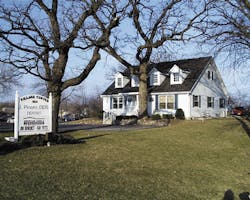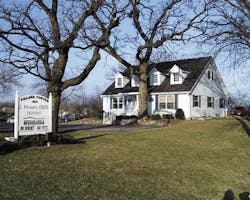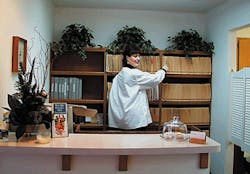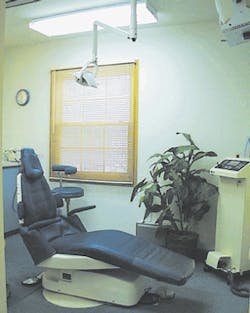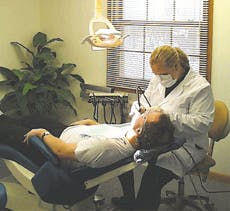The rehabilitated practice
With a vision and state-of-the-art dentistry, the author revived a struggling, small-town practice in Wisconsin.
Jorge Pinero, DDS
Through my lectures, I have been in contact with thousands of dentists worldwide and have discovered that most of them believe other practices are "greener" than theirs. Many of us have a delusion that the other practitioners live in a different dental world. We often feel that our practice does not measure up to the rest. I would like to help dispel the belief that "the grass is always greener on the other side." Your grass can and will be greener with weeding, a little fertilizer, a little sunshine, and some old-fashioned elbow grease.
In all of my courses on patient-management and hands-on esthetic continuums, I speak of providing state-of-the-art dentistry and first-class service for patients. After reaching all of my professional and financial goals practicing three days a week in one of the top 5 percent of practices in the U.S., I feel qualified to teach others to "follow the formula" to a new way of providing dental service for patients. In addition to the technical training provided, diagnostics, treatment-plan presentation, and case acceptance are discussed extensively. Yet, the same questions and objections always arise: "How can I do this where I live?" "I don`t have the kind of patients who will accept this kind of stuff, and most of them are bent on insurance."
I decided to embark on a journey to revisit what the everyday practice has to contend with. I bought a small, two-operatory practice in Racine, Wis., a small town of about 60,000 people. The office is on one of the main thoroughfares and has cramped, yet accessible, parking. It is located next to a bowling alley and is down the street from a government-subsidized housing complex. There are about 150 dentists in this community. Income levels are lower per capita than in most towns of this size.
The previous dentist worked five or six days per week and saw an average of 20 patients per day, with the help of one staff member. His motto was "do it cheap so they will stay." He had over 25 new patients per month and an existing patient base of over 2,000. When I took over the practice, the patient base was 10 percent cash, 20 percent insurance, 30 percent HMO and PPO plans, and 50 percent Medicaid.
He performed mostly amalgam-restorative services and extractions with some crown-and-bridge procedures mixed in. It mainly was an emergency practice with many collection problems. The practice grossed about $265,000 per year with a $75,000 write-off on Medicaid, PPOs, and HMOs. Patients were scheduled for several months and the appointment book was full.
It was a rude awakening to what I experience in our "systemized" Milwaukee practice. This was the typical nightmare that faces many dentists today. Working like dogs with little or no respect or personal fulfillment and dictated to by managed care and patients wanting only emergency care. I decided to employ my system of having the best practice in that community.
The first week I referred over 600 Medicaid, PPO, and HMO patients out of the practice. The second week I referred out about 400 patients who had a history of failed appointments and bad accounts. The third week I referred out the remaining Medicaid, PPO, and HMO patients. I referred out over 1,500 patients in 18 months. I could not have been happier.
We introduced intraoral cameras and a patient-education system to patients. The previous patient base was not accustomed to taking part in any decisions concerning their treatment. They had developed a trust in the previous dentist`s way of delivering care.
We used the intraoral equipment to present patients` dental-health needs and foster their trust in our care. We added ultrasonic scalers and an Nd:YAG laser to provide cutting-edge soft-tissue surgery. We brought state-of-the-art periodontal treatment to our office. Amalgam was discarded and replaced with state-of-the-art composite systems. Instrumentation was expanded to include only the latest and best restorative systems. Amalgamators were replaced with Demetron high-speed, composite-curing lamps.
In addition, the usual cutesy wall hangings were replaced with before-and-after photographs to show the world-class dentistry we were able to provide. We hung certificates and awards earned through the years for my clinical dentistry, attesting to the quality and experience patients could expect in the practice. Patients receive written literature on our specific treatment approaches, along with testimonial letters from previous patients.
We perform comprehensive examinations on all patients. We recommend ideal treatment for their dental needs and wants. Was I scared to make such a radical change, afraid of losing even more patients? You bet I was. But it had worked for me before, and I knew it would work again.
I`ve found that most patients want the best I have to offer. Patients are amazed that I ask them what they want. Most of them tell me, "Do what you would do for yourself." And that is what I do for them. We are metal free, except for precious metals used for crown-and-bridge therapy. We prescribe significant numbers of belleGlass, Empress, and Captek restorations.
We provide dental care for people we choose to keep in our practice ... people who value dentistry. Now, we are getting showered with thank-you notes, gifts, and letters of appreciation. Most patients are paying in advance for services.
We evaluated this new patient base to determine where they work, live, and shop. The most significant findings were that the majority of these patients have children, work in a factory, earn an average income, live in small- to mid-sized homes, drive modest vehicles, vacation in the northern part of the state, and have a strong value for quality dentistry.
In the 18 months after taking over this practice, we have generated over $400,000 annually, working two days per week. We get referrals from happy, satisfied patients who pay for their services with delight. The new staff consists of a clinical assistant, a receptionist, and a part-time hygienist, all who are unconditionally committed to the vision and systems of the practice.
I enjoy dentistry and can`t wait to get to the office in the morning. The combined revenue of both of my practices exceeds seven digits in income with an overhead below 60 percent. The dental teams are happy, richly rewarded, and love their profession. The patients are happy and healthy. What more can a dental team want?
With mastery of patient-management skills, technical expertise, a positive mental attitude, a strong vision, and a predictable system anyone can have a "Beverly Hills" practice ... even in the cabbage capital of the world - Racine, Wisconsin. The grass can be greener under your feet ... learn to see it and cultivate it!
The business office is small, yet efficient. It provides the necessary functions required to maintain a "top-5-percent" practice.
The reception area provides state-of-the-art patient education with before-and-after photographs demonstrating the services offered in the practice.
Treatment rooms are very basic and inviting. State-of-the-art instrumentation is utilized to provide world-class service.
The second operatory doubles as a hygiene room able to accommodate and provide personalized soft-tissue services.
